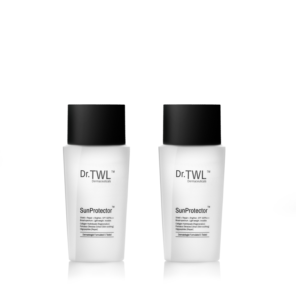Protecting Against Skin Cancer
Skin cancer is the eighth most common cancer in Singapore. While most of us know that too much sun can put us at risk, avoiding the outdoors is hardly a practical method of prevention. Thankfully, minimizing sun exposure is not the only way to protect our skin.
Get to know the different types of skin cancer below and pick up some sun safety tips.
What are the types of skin cancer?
The most common types are melanoma and non-melanoma skin cancer.
Non-melanoma skin cancers (NMSCs) comprise more than 95 per cent of all skin cancers. Incidence rates increase proportionally with proximity to the equator, and are also higher for people with fairer skin.
The two common types of NMSCs are basal cell carcinoma (BCC) and squamous cell cancers (SCC). In BCCs, the cancer cells are found in the basal cell layer, the lowest layer of the epidermis. In SCCs, the squamous cells, or the flat cells in the outer epidermis layer, are affected.
Basal cell carcinoma
Basal cell carcinoma is an abnormal, uncontrolled growth of skin cells that arises from the skin’s basal layer. Resembling open sores or pink patches of growth, BCCs have low metastatic potential (will not spread to other parts of the body). The cancer grows slowly, taking more than six months to reach one centimetre.
Although it is life-threatening only in rare cases, a patient with a BCC is at higher risk of developing another tumour. Having more than ten BCCs puts you above a 90 per cent chance of presenting with a new lesion. It is advised to treat the condition right away through surgical incision to prevent recurrence.
Squamous cell cancer
SCCs manifest as firm, red keratotic papule with ulcer and occasional pigmentation. A significant difference between the two types of NMSCs is that SCCs have a greater tendency to metastasize than BCCs. They may grow deeper into the layers of your skin and spread to other parts of the part, becoming an aggressive form of cancer when left untreated.
Melanoma skin cancer
Melanoma is a tumour of melanin-forming cells. Melanoma cells eventually invade the dermis layer and have metastatic potential. They can also spread to other tissue or organ sites.
Melanoma occurs in areas of the body with intermittent sun exposure, such as the back in men and lower legs of women. This would include people with indoor occupations whose sun exposure is limited to weekends and vacations.
The risk factors for melanoma include both predisposition (skin colour, family history of melanoma, age, the tendency to freckle) along with exposure to environmental factors including the sun.
How the sun causes cancer
UV rays from the sun can damage your skin’s DNA, particularly when you intermittently expose your skin. This is because prolonged sun exposure allows melanocytes to increase melanin (the skin’s protection from the sun) but intermittent sun exposure does not provide adequate time for this process. As a result, the skin is exposed to the sun but develops no protection against UV radiation. This impairs your body’s ability to control skin cell growth, and can lead to cancer.
You increase your risk of developing melanoma when you have exposures that induce sunburn. Five or more severe sunburns during youth roughly double your risk of melanoma. The incidence of melanoma also increases with age, as there are more opportunities for tumour formation.
Protection against skin cancer
Prevention strategies for skin cancer center around protecting the skin from exposure to sunlight. This can include sun avoidance and protective clothing, but one powerful and practical daily method is the regular application of sunscreen.
As sunscreens absorb UV rays, the protective molecules slowly break down. To maintain maximum protection all day, reapply your sunscreen every two hours. This is particularly important when you’re outdoors.
It’s also never too young to start wearing sunscreen. In fact, protection is most effective when begun in early childhood.
Early detection of cancer is also crucial in fighting skin cancer. Check your skin regularly and visit a doctor immediately if you see any unusual changes.
© 2018 drtwlderma.com. All rights reserved.
—–
SHOP THE STORY



